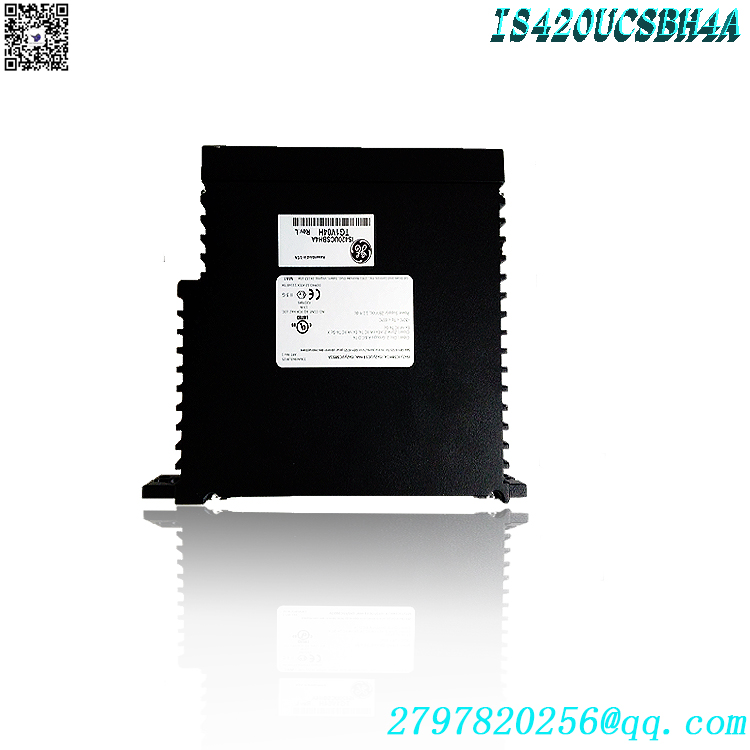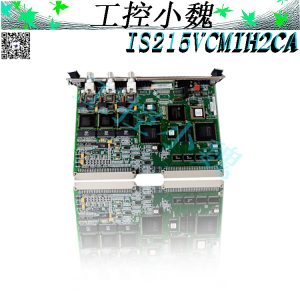Description
IS420UCSC2A Controller is available in stock which ships the same day.
IS420UCSC2A Controller comes in UNUSED as well as REBUILT condition.
To avail our best deals forIS420UCSC2A Controller, contact us and we will get back to you within 24 hours.
IS420UCSC2A Other names:
Output module IS420UCSC2A
IS420UCSC2A controller module
Editable controller IS420UCSC2A
Product Description
IS420UCSC2A is the first quad core controller in the Mark VIe series. This controller is produced by General Electric and is equipped with the QNX Neutrino operating system. When using the QNX Neutrino operating system, the controller can run a highly reliable and high-speed operating system. This controller not only uses the QNX operating system, but also uses EFA (Embedded Field Agent) technology to provide real-time data through stable connectivity applications based on Predix cloud.
Although most controllers used with the Mark VIe series have I/O functionality for use with the device, the IS420UCSCH1A controller does not have the ability to host any application I/O. This controller can be used in a redundant set, and when in a redundant set, it will have all connected I/O networks to each controller in the redundant set, which provides input data for the controller.

One of the communication functions of the IS420UCSC2A controller is to communicate with the UDH network; To communicate with the UDH network, a 4 GB flash drive needs to be configured using the ToolboxST application. All the information required to determine the configuration can be found in the GEH-6855 manual. Information about UCSC controllers can be found in Chapter 2 of this manual.
IS420UCSC2A is a thermocouple input module developed by General Electric Company. It serves as a bridge, connecting the I/O Ethernet to the thermocouple input terminal board through complex electrical interfaces. The thermocouple input module is a precision multifunctional component of the Mark VIe series, designed to provide precise temperature monitoring in various industrial applications. Its compatibility with various thermocouple types, scalability in processing inputs, and user-friendly functionality make it a valuable asset in temperature control and measurement crucial control and monitoring systems.
.jpg)
feature
The core of this module is a processor board that is common to all Mark VIe distributed I/O packages. The central processing unit serves as the brain of the module, coordinating data collection and communication. It forms the foundation for building module functionality.
In order to meet the precise requirements of thermocouple input, the module is equipped with a dedicated acquisition board for thermocouple input. This specialized hardware ensures accurate and reliable measurement of temperature changes, which is crucial for temperature control applications.
This module has impressive scalability and provides flexibility in handling thermocouple inputs. In the simplex setup using the TBTCH1B terminal board, each module can manage up to 12 thermocouple inputs. When two modules are used in combination, this configuration allows for monitoring a total of 24 inputs.
Suitable for various thermocouple types, including E, J, K, S, and T thermocouples as well as mV inputs. It covers a wide mV input range of -8 mV to+45 mV, ensuring compatibility with various temperature measurement devices.
In order to power the module, it has dual RJ45 Ethernet ports and three pin power inputs, simplifying power connections and providing redundancy for reliable operation. The output interface of this module is a DC-37-pin connector, which can be directly connected to the terminal board connector for safe and efficient connection.
In order to achieve real-time status monitoring and diagnosis, this module integrates LED indicator lights. These LEDs provide visual feedback, allowing operators to evaluate the operational status of the module and quickly identify any potential issues.
compatibility
Dual RJ45 Ethernet ports and three pin power input are used to power the battery pack. The output is a DC-37-pin connector that connects directly to the terminal board connector. LED indicator lights are used to display visual diagnosis. It accepts E, J, K, S, and T thermocouples as well as mV inputs.
Installation of IS420UCSC2A
Fixed terminal board: First, select the terminal board that is suitable for your application. The terminal board provides an interface between the I/O package and the system. Ensure that it is securely installed and positioned according to the needs of your specific settings.
Connect the PTCC I/O package: Connect the I/O directly to the terminal board connector. This step establishes an electrical connection between the I/O package and the system. Ensure that the connection is secure to prevent any loose or intermittent contact issues.
Mechanical fixation of packaging: To physically secure the I/O in place, use threaded studs close to the Ethernet port. This step ensures that the I/O package is securely fixed to the terminal board and prevents accidental disconnection due to vibration or movement.
Ethernet connection: Depending on your system configuration and network requirements, you may need to connect one or two Ethernet cables to the I/O package. You can flexibly use any port for network connection. If you choose dual connection, please ensure that ENET1 is connected to the network connected to the R controller to achieve correct network communication.
Power connection: Insert the connector on the side of the I/O pack and connect the I/O pack to the power supply. It is worth noting that the I/O package includes built-in soft start function. This function can adjust the surge current when powered on, eliminating the need to disconnect before insertion. This simplifies the power connection process while maintaining system stability.
Configure using the ToolboxST application: After physically installing and connecting the I/O package, the final step is to configure the package according to the application’s needs. This can be achieved using the ToolboxST application, which provides a user-friendly interface for configuring and customizing I/O package settings to meet your specific requirements.
.jpg)
processor
The processor board is connected to a collection board suitable for I/O pack or module usage. When input power is applied, the soft start circuit will increase the available voltage on the processor board. The processor reset has been removed, and the local power supply has been turned on in sequence. The CPU runs a self checking program before loading application code specific to the I/O package or module type from flash memory. In order to verify whether the application code, collection board, and terminal board match correctly, the application code reads the board ID information.
Automatic reconfiguration
The automatic reconfiguration function allows operators to exchange I/O packets without the need to manually reconfigure each packet or module.
After activating the automatic reconfiguration function, when the controller detects that the I/O package is started in a different configuration, the reconfiguration file will automatically be downloaded from the controller to the I/O package.
Analog input hardware
The thermocouple connected to the terminal board sends 12 mV level signals to the PTCC input board. Six differential multiplexers, a main multiplexer, and a 16 bit analog-to-digital converter transmit digital data to the next processor board, forming the analog input section.
diagnosis
The packaging performs the following self diagnostic tests:
Power on self test: After power on, the battery pack will initiate a comprehensive self test. This test covers a series of key hardware components, including RAM (random access memory), flash memory, Ethernet ports, and processor board. By examining these components, the package can promptly identify any issues or differences that may hinder its performance.
Power monitoring: The battery pack maintains continuous vigilance against its internal power supply. It continuously monitors power levels to ensure that the equipment receives the voltage and current required for optimal operation. This active monitoring can prevent power related faults or interruptions.
Electronic ID verification: To confirm the integrity of hardware settings, the package verifies the electronic identification information of the terminal board, acquisition board, and processor board. This verification process ensures that hardware components are consistent and will not undergo unauthorized changes or replacements.
Relay board feedback processing: This package reads and processes feedback specific to the relay board. This step helps to evaluate the performance of the relay board and identify any abnormal situations or issues that may require attention or maintenance.
Multicast communication monitoring: After configuring the PGEN package, the system will continuously monitor multicast communication. This real-time monitoring ensures the integrity and effectiveness of the communication system, helping to detect any anomalies, delays, or interruptions in data transmission.
Frequently asked questions
What is IS220PTCCH1A?
It is a thermocouple input module developed by General Electric Company.
How many thermocouple inputs can a module handle in simplex settings?
In a simplex configuration, each module can manage up to 12 thermocouple inputs.
What types of thermocouples does this module support?
This module accepts E, J, K, S, and T thermocouples as well as mV inputs within the range of -8 mV to+45 mV.
How is the module powered?
This module is powered through dual RJ45 Ethernet ports and a three pin power input.
How does the module perform its initial setup and self check program?
The processor board manages the soft start function and executes self checking programs to ensure the correct matching of application code, acquisition board, and terminal board.
Comment on IS420UCSC2A
The IS420UCSC2A controller is the first UCSC controller in the Mark VIe series. Although the information about UCSC controllers in the GEH-6855 manual applies to all UCSC controllers, this information mainly applies to the IS420UCSC2A controller.
Model recommendation:
IS420UCSCH1B
IS420UCSBH1A
IS420UCSBS1A
IS420UCSCH2A-E-V0.1-A
IS420UCSBH3A-UCSB
IS420UCSBS1A-UCS
IS420UCECH1B-A
IS420UCSCH2A
IS420UCECH1B
IS420UCSBH1A-UCSB
IS200ESELH1A
IS220UCSAH1A
IS200AEPGG1AAA
IS200TSVCH2AED
IS215UCCCM04AB
IS220PDIOH1A
IS220PPROS1B
IS200EPMCH1
IS215UCCAH3A
IS200JPDGH1A
IS420UCSBH1a
IS415UCVHH1A
IS215UCVHM06A
IS415UCVHH1AB
IS420UCSCS2A-B-V0.1-A
IS41ySUAAH1A
IS410BAPBH1A
IS41yJPDEG1A
IS41yJPDDG4A
more……


-300x300.jpg)

admin –
Product Description
IS420UCSC2A is the first quad core controller in the Mark VIe series. This controller is produced by General Electric and is equipped with the QNX Neutrino operating system. When using the QNX Neutrino operating system, the controller can run a highly reliable and high-speed operating system. This controller not only uses the QNX operating system, but also uses EFA (Embedded Field Agent) technology to provide real-time data through stable connectivity applications based on Predix cloud.
Although most controllers used with the Mark VIe series have I/O functionality for use with the device, the IS420UCSCH1A controller does not have the ability to host any application I/O. This controller can be used in a redundant set, and when in a redundant set, it will have all connected I/O networks to each controller in the redundant set, which provides input data for the controller.